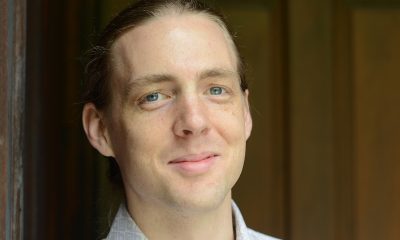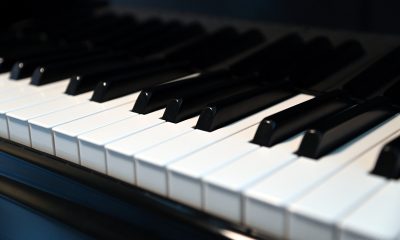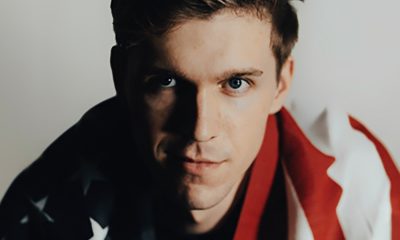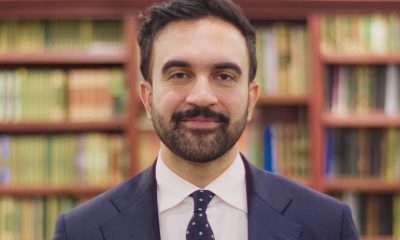Books
Jeremy Denk’s memoir proves he’s as gifted with words as with music
Gay pianist’s coming-of-age story has broad appeal
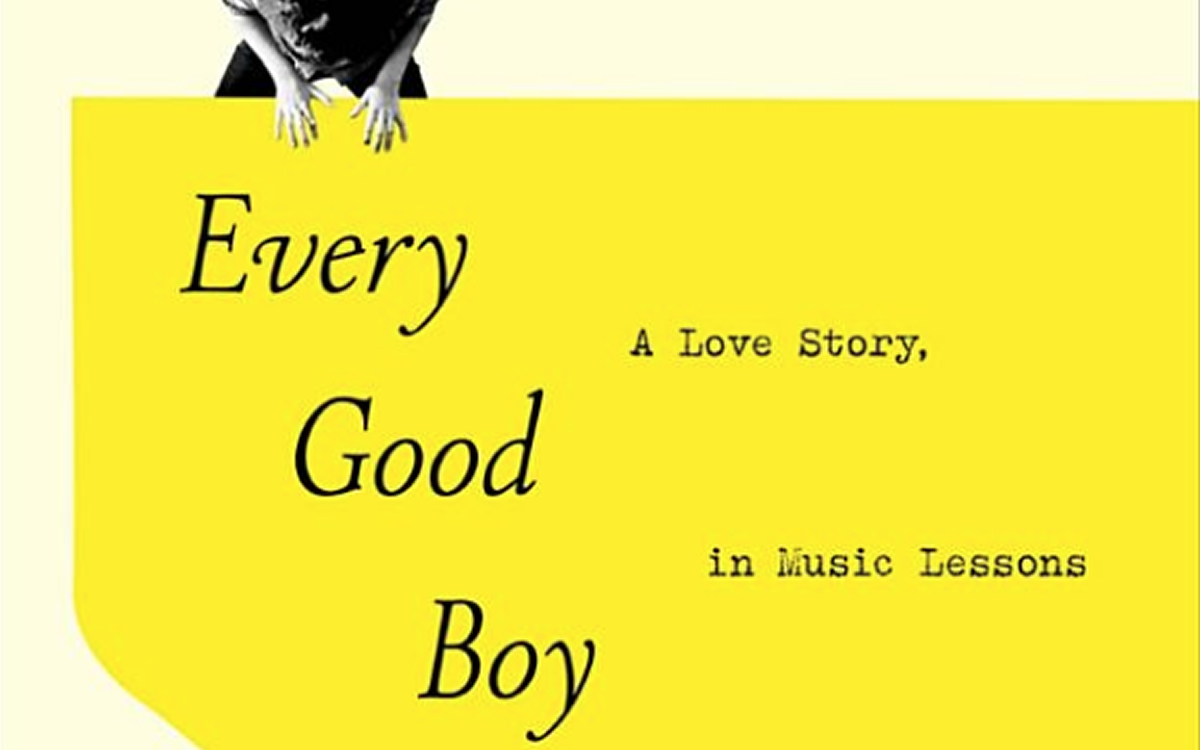
‘Every Good Boy Does Fine’
By Jeremy Denk
c.2020, Random House
$28.99/368 pages
When I was nine, my parents decided I should learn to play a musical instrument. A teacher in our town tried to get me to take to the guitar. “Her playing was remarkable,” he said, aiming for tact, but sounding as if he’d just bitten into a cat litter sandwich.
You might think “Every Good Boy Does Fine,” the new memoir by Jeremy Denk, the gay, MacArthur-genius-award-winning concert pianist, would have little appeal for musical philistines like me. Or that Denk’s coming-of-age story would only tickle the ivories of musicians and their aficionados.
But you would be wrong. Denk, a “New Yorker” writer, is a superb wordsmith. He’s as gifted with words as he is with the piano.
The memoir is structured around a through-line of musical lessons (in harmony, melody and rhythm). In these chapters, Denk writes with intelligence, wit, and wonderful metaphors of music and the arduous discipline and practice needed to learn to play the piano.
One day when he was 12, Denk, who was born in 1970, bought a cassette of Mozart’s “Sinfonia Concertante with the Cleveland Orchestra.” “I was the kind of kid who thought he’d already figured out Mozart,” Denk writes, “but could barely tie his shoelaces.”
Denk, winner of the Avery Fisher Prize, began piano lessons at age six. It was soon clear that he was talented.
From childhood on, Denk endured the tedium of practicing the piano. “Scales were the ultimate joyless task,” he writes, “an endless and recursive tedium.”
Denk’s family moved from North Carolina to New Jersey when he was six and from New Jersey to New Mexico when he was 10.
In New Mexico, Denk took lessons from William Leland, a New Mexico State University piano professor. In Oberlin College (which he entered at 16), he decided to become a musician.
In graduate school, Denk studied under the acclaimed pianist Gyorgy Sebok, and he received a Ph.D. from Julliard in 2001.
Denk’s writing about music and his teachers will be catnip to musicians and classical music fans. But his stories of sweat, competition, enduring criticism — nurturing one’s talent will resonate with everyone from athletes to artists to chefs to race car drivers.
Learning to be a concert pianist isn’t for the faint of heart. “‘Why are you fucking waiting?’ he yelled in my face,” Denk writes about a lesson with an acclaimed teacher, “coating me with a fine film of Scotch-scented saliva.”
Denk’s bio is proof that whatever doesn’t kill you makes you stronger. He’s emerged from the grueling lessons as a rock star! Denk’s recordings have reached #1 on the Billboard classical charts.
Thankfully, “Every Good Boy Does Fine” isn’t only the story of Denk’s professional growth. The memoir has a parallel, by turns funny, sad, ironic –gut-wrenching, narrative of Denk’s personal life.
His mother is an alcoholic. His Dad is demanding. His brother doesn’t know what to make of his obsession with classical music. Denk has a hard time becoming comfortable with being gay.
Denk knew early on that he was different from other kids. “I was eager to be brave,” he writes of the ecstatic moment at age 12 when he listened to the cassette of Mozart. “I wanted to share the moment with my parents.”
“But I worried,” Denk writes, “my father would make a joke, or my brother would think I was showing off, or my mother would ask why I hadn’t dusted the living room.”
Denk emerges from the memoir as endearingly human. He’s delighted to be kissed by Princess Diana (when he’s awarded the third prize in a competition).
“Why do you play so loud?” a man asks him in the bathroom after he’s performed a concert in Munich.
You’re happy with Denk when he finds love.
“Every Good Boy Does Fine” is one of the best memoirs I’ve read this year. It’s never out-of-tune.
The Blade may receive commissions from qualifying purchases made via this post.
Books
Florida’s war on Black, queer lives hidden no more
New book ‘American Scare’ exposes truth of decades of erasure, attacks
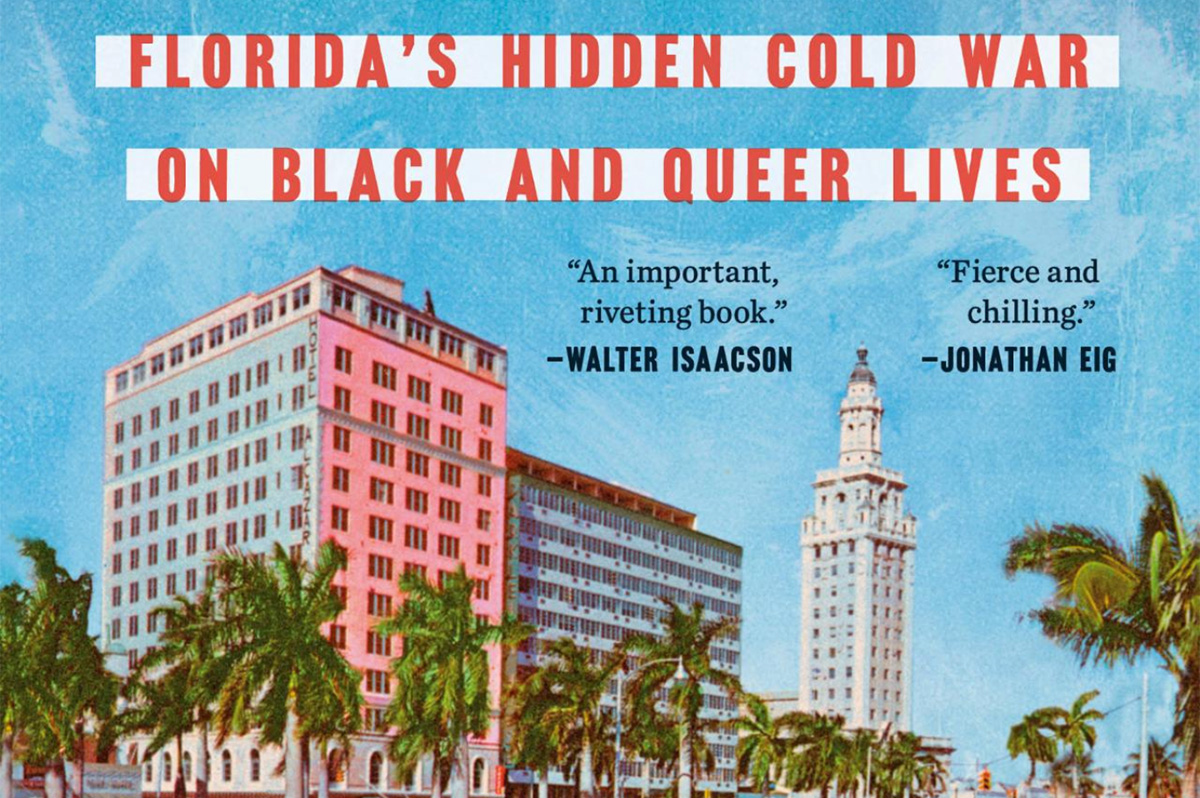
‘American Scare: Florida’s Hidden Cold War on Black and Queer Lives’
By Robert W. Fieseler
“What’s with Florida?,” Bobby Fieseler, disgusted, asked after completing his initial research into the vicious investigation of suspected homosexual teachers by the Florida Legislative Investigation Committee (FLIC) in the 1950s. How did the official animus toward all things queer happen in Florida, Fieseler pitched his publisher. We can be grateful Dutton gave him the green light for “American Scare, Florida’s Hidden Cold War on Black and Queer Lives.”

Fieseler’s book is a masterpiece of archive activism that begins in a rental van escaping Florida with some 20 boxes of historical documents meant to be seen by no one. The cartons contained a secret second copy of materials that had been held back from the jaws of the Florida State Archives in Tallahassee. Soon, more folders would surface with unredacted materials. “There are friends of Dorothy in any system,” he explains his archival detective work with a wink.
What’s with Florida? In the 1950s, it was all about legislators exposing politically helpless homosexuals to justify the committee’s investigations and budgets. The FLIC documents reveal the names of the accused “perverts,” the cops who raided the restrooms, the terrified queer informants and the professional interview techniques that would extract confessions from the victims. On another level, this was about old-school Southern racists determined to stop integration at all costs with intention to weave lies about Communist infiltration of the NAACP. Finally, Fieseler encountered first-hand an official determination to erase and lock-up this history. The statewide obsession with erasing history continues to this day. The Florida Department of Transportation this year painted over the community rainbow crosswalk memorial to the Pulse nightclub massacre victims in Orlando.
“American Scare” is such a fully documented investigation of what unfolded, it will be impossible to paint over the magnitude of this assault. The book bears witness in gory detail to the ruination of private people that exceeds in pure perniciousness the more famous “Lavender Scare.” Although the “Lavender Scare” purged many more individuals, it was about the U.S. Department of State firing public officials slimed as “pinstripe twerps.” The Florida investigations were a statewide purge using a dark politics of exposure of schoolteachers leading private lives. Fieseler quotes Remus Strickland, the head homo-hunter and executive director of the Southern Association of Intelligence Agents formed in response to the Supreme Court’s Brown v. Board of Education desegregation decision (1954), “If the Committee’s first pursuit (race and Communism) was a mandate, its second pursuit (homosexuals) was an opportunity.” Remus (that’s really this Southerner’s name) explained years later without remorse, “We first looked at the University of Florida for Communists….then we came back and did the homosexual purge.” Fieseler’s archival research reveals how far-right politicians and investigators like Strickland characterized Communists, African Americans (through the NAACP) and homosexuals as aligned “treasonously in a subversive societal infestation.”
The whole show was the creation of a wily, populist politician — a Florida “Pork Chopper” — Charley Johns, president of the Florida Senate. “Pork Choppers,” the rural, white Northern Florida wing of the old Democratic Party, controlled the state legislature from the 1930s to the 1960s. They were strongly opposed to integration, Communists, homosexuals, reapportionment and government reform. Johns owned the Charley E. Johns Insurance Agency, which insured state agencies. Fieseler’s history brings these North Florida politicians into grotesque focus. Their “power had lynched history,” he writes about his passion to excavate how they sealed and redacted the records so they would never face responsibility for their actions.
“American Scare” reveals how these Pork Choppers were willing to crush homosexuals as an instrument to maintain power. Their victims were isolated gay and lesbian teachers who could only plead for mercy, vanish or inform on one another. They were entrapped by the system itself. Fieseler tells the story of how Remus Strickland pulled Miss Poston, a physical education teacher out of her classroom surprising her with a tape recorder and a request to give a misdirecting statement about the prevention of child molestation. Suddenly Remus changed the subject: “Miss Poston, in your acts with Miss Bradshaw whom you referred to on this record, would she play the part of the aggressor…..She was known as the butch is that true?….Was there any occasion of any oral copulation?” He closed in for the kill, “Could there have been more than one time”? Miss Poston caved, “Possibly but if so only one more time.” The reel-to-reel tape is turning.
Concert pianist and music teacher William James Neal received the same taped grilling. Remus begins the interview, “You’re an educated Nigra,” confronting Neal with testimony he was a homosexual “nigra.” Years later, Neal remembered, “He told me I would never teach within the continental limits of the United States. He said he had proof I was a homosexual.” An African-American concert pianist, Neal had extensively toured the U.S. playing with major orchestras and hosting his own radio program in Florida. Neal had the self-respect and courage to take his illegal termination to the Florida Supreme Court. In 1962, the court ruled in his favor (Neal v. Bryant) handing Remus Strickland a devastating defeat, writing “The statements accused teachers allegedly made were obviously extracted under a threat of publicity.” Vindicated, William Neal nonetheless left Florida never to return.
There have been resolutions for an acknowledgment and apology. None have advanced through the Republican-controlled legislature occupied with a slew of “Don’t Say Gay” bills. “American Scare’ is larger than a small-bore history of investigations. It is the story of a Great Florida Teacher’s Purge launched to stop integration. Fieseler is done with redactions. He names names. If there is anything redemptive in this Southern hot mess, it is this: Bobby Fieseler, a queer historian, rescued the boxes and delivers readers their contents with history’s gale force.
The Blade may receive commissions from qualifying purchases made via this post.
Books
New book celebrates gay rights pioneer you’ve never heard of
Craig Rodwell was at Stonewall riots, helped start first Pride, and more
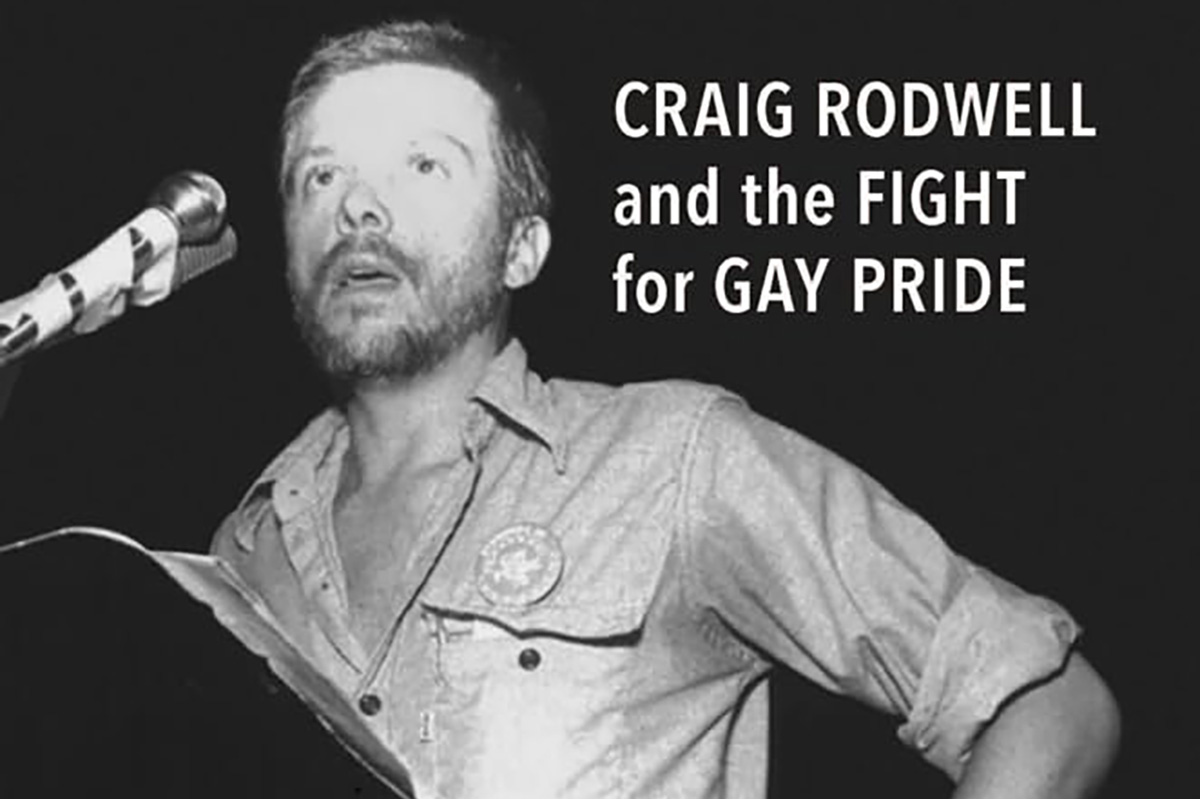
‘Insist That They Love You: Craig Rodwell and the Fight for Gay Pride’
By John Van Hoesen
c.2025, University of Toronto Press
$36.95/432 pages
Craig Rodwell is, sadly, not nearly as well known as he should be, given his accomplishments. He opened the first bookstore devoted to gay and lesbian literature. He led a chant of “Gay power!” at the Stonewall riots and contributed many articles about the struggle for equality and fair treatment. He helped organize the first Pride march. Thankfully, journalist John Van Hoesen’s new book, “Insist that They Love You,” tells Rodwell’s story.

Rodwell was born in Chicago in 1940 and spent his early years at a Christian Science-run children’s home. As a teenager, he roamed the streets, connecting with older men. One of those lovers was arrested and later died by suicide. He moved to New York to study dancing and joined the Mattachine Society, one of the first groups involved in “gay liberation.” He dated Harvey Milk, a challenging relationship, as the older Milk was still closeted while Rodwell was out and deeply involved in the cause. This was when being gay was a crime and public exposure risked getting fired and evicted.
In 1967, he opened the Oscar Wilde Memorial Bookshop (correcting anyone calling it a bookstore), which openly displayed gay and lesbian books and materials. It had large, inviting windows, different from the typical places gay people congregated. Many walked past it, working up the courage to go in. Once they did, they found a welcoming place where they could learn and connect with others. Van Hoesen writes about the diversity of the Bookshop’s employees, gay, lesbian, Black, and white, who all loved the sense of community and purpose Rodwell created.
That same year he helped form the group Homophile Youth Movement in Neighborhood and created their periodical HYMNAL. He wrote many articles for them and later, for QQ Magazine, describing the forces in straight “heterosexist” society, as he termed it, against gay people. He wrote about mafia-controlled gay bars, including the Stonewall Inn, seedy places that overcharged for watered-down drinks. He decried how the law was used to persecute gay people, describing his arrest for wearing “too-short” swim trunks. He explained what to do if arrested: never speak without a lawyer present and never provide names of other gay people. Van Hoesen helpfully includes these articles in an appendix.
Rodwell’s history of activism is impressive. In 1966, he participated in a “sip-in” protesting a law forbidding bars serving alcohol to homosexuals; it took three attempts before one refused to serve him. He and his partner happened by the Stonewall Inn when the riots began, offering the protesters support. He helped lead a group that picketed Independence Hall in Philadelphia every year as an “Annual Reminder,” arguing with organizer Frank Kameny over the required conservative dress code.
He organized the first Pride march in 1969. One of the biggest challenges was getting all the different gay rights groups, with different objectives, to work together. The police only issued the permit the morning of the march. Among the book’s photos is one of Rodwell and his partner afterwards, looking exhausted but happy.
Rodwell never sought the spotlight for his work, always working with others. Yet he often chaffed against many of the organizations’ philosophies, one of the few Mattachine Society members to use his real name. He refused to sell pornography in the Bookshop, or work with gay business owners funded by the mob. He even threw some customers out. Let’s hope this biography shines more attention on this lesser-known leader of the gay rights movement.
The Blade may receive commissions from qualifying purchases made via this post.
Books
New book a fun travelogue, memoir focused on cemeteries
‘Somebody is Walking on Your Grave’ takes readers around the world
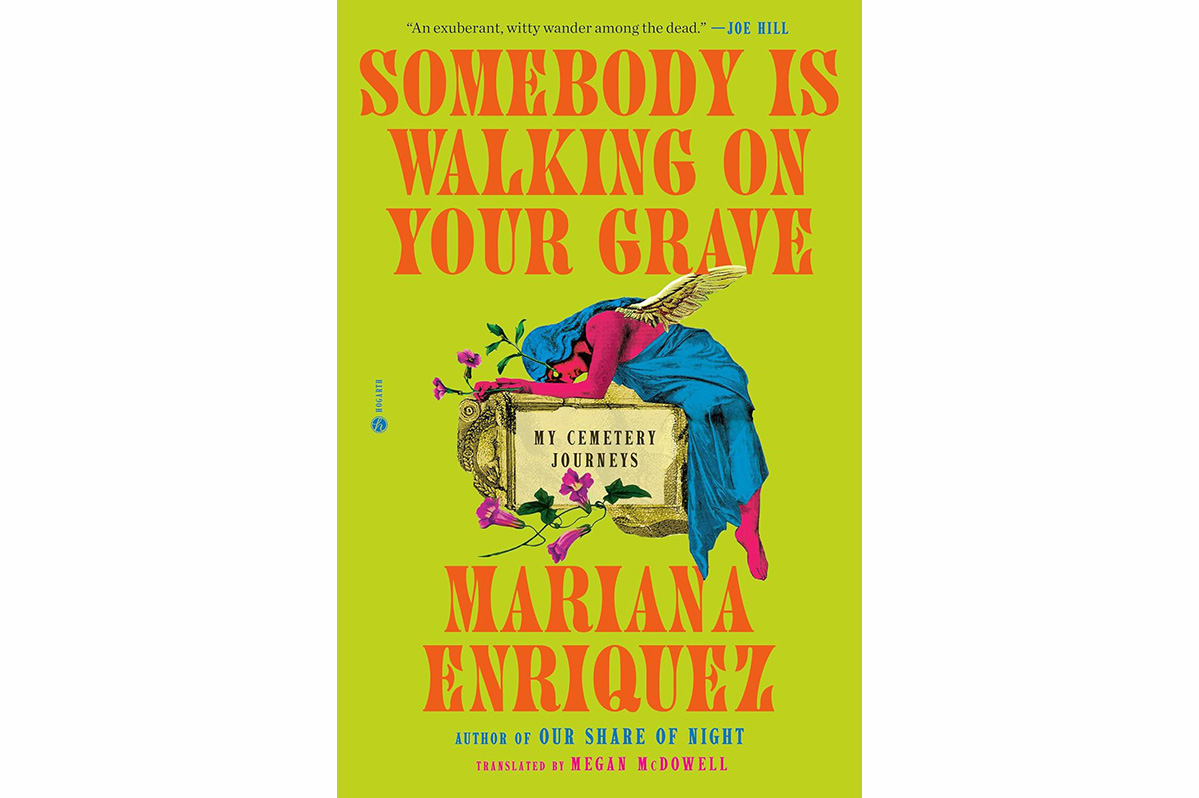
‘Somebody is Walking on Your Grave: My Cemetery Journeys’
By Mariana Enriquez, translated by Megan McDowell
c.2025, Hogarth
$30/336 pages
The knee bone’s connected to the shin bone.
You can go up from there, or down your body’s scaffolding. The backbone’s connected to the rib bone. The hip bone to the leg bone, the wrist bone to the finger bones, and in the new book “Somebody is Walking on Your Grave” by Mariana Enriquez, translated by Megan McDowell, there’ll come a day when you won’t need any of them.

She always had an appreciation for cemeteries.
Still, they weren’t an obsession until Mariana Enriquez fell head bone over heel bones in love with a street musician while on a vacation in Italy with her mother. He took Enriquez through a cemetery on their whirlwind romance, which sealed her love for graveyards.
She never seems to miss a chance to tour them, to marvel at the beauty of statuary atop marble resting places, to see tombstones listing sideways, or to note the names and tragedies of the dead. This includes the graves of non-humans, like a horse that helped its owner escape an Argentinian uprising in 1885; and a Scottish dog who guarded his owner’s grave for more than a decade.
Enriquez visited San Sebastián, Spain, and was almost jailed for it; and she was lectured about Aboriginal graves by a white man on Rottnest Island, off the Australian coast. There was a magical sense at Sara Braun Municipal Cemetery in Chile, and an absurd couple of mysteries in Argentina. She visited just some of the 42 cemeteries in New Orleans including, of course, crypts and the grave of Marie Laveau. She spent Dios de Muertos in Mexico, and was surprised that you can live near a funeral home in Savannah and not have ghosts. She visited the catacombs in France, and argued with guides and guards in several different places, noting that people are a lot nicer when they’re dead.
In a very big way, “Somebody is Walking on Your Grave” is a fun travelogue that’s also part memoir, and taphophiles will love it. But readers who specifically add a cemetery tour to their vacation itinerary, or who obsessively scour guidebooks for graveyards to visit will enjoy author Mariana Enriquez’s observations; they’re humorous and not stuffy, lightly acknowledging the bit of the macabre that’s here. She includes history behind the cities she visits, as well as for the cemeteries, and that can be a bit longish sometimes. You may not mind, though, because her descriptions enhance any trip you might make, serving as exactly what you’d want from a real live tour guide.
But toward the end of this otherwise-delightful book, Enriquez unabashedly admits to doing something atrociously unsettling, to which she says she feels no remorse – which may be a hard forgive for readers who wouldn’t ever dream of emulating it.
This book is a fun read, up to that point, so just beware. Most of “Somebody is Walking On Your Grave” is truly interesting, but that one chapter inside here may not fully allow you to wrap your head bone around it.
The Blade may receive commissions from qualifying purchases made via this post.
-

 District of Columbia3 days ago
District of Columbia3 days ago‘Sandwich guy’ not guilty in assault case
-

 Sports3 days ago
Sports3 days agoGay speedskater racing toward a more inclusive future in sports
-

 Michigan5 days ago
Michigan5 days agoFBI thwarts Halloween terror plot targeting Mich. LGBTQ bars
-

 New Jersey4 days ago
New Jersey4 days agoBlue wave hits Northeast: Sherrill and Mamdani lead Democratic comeback



